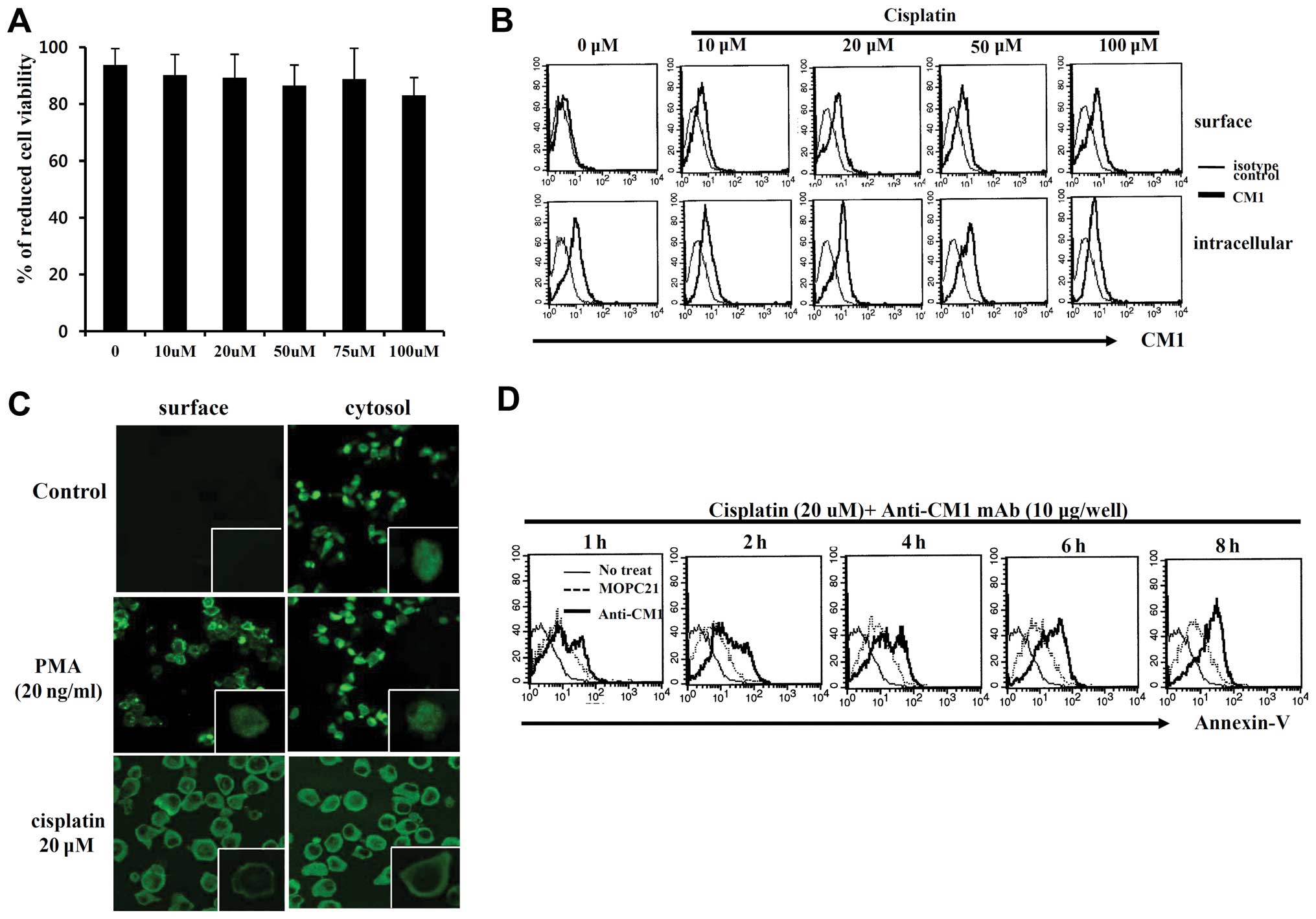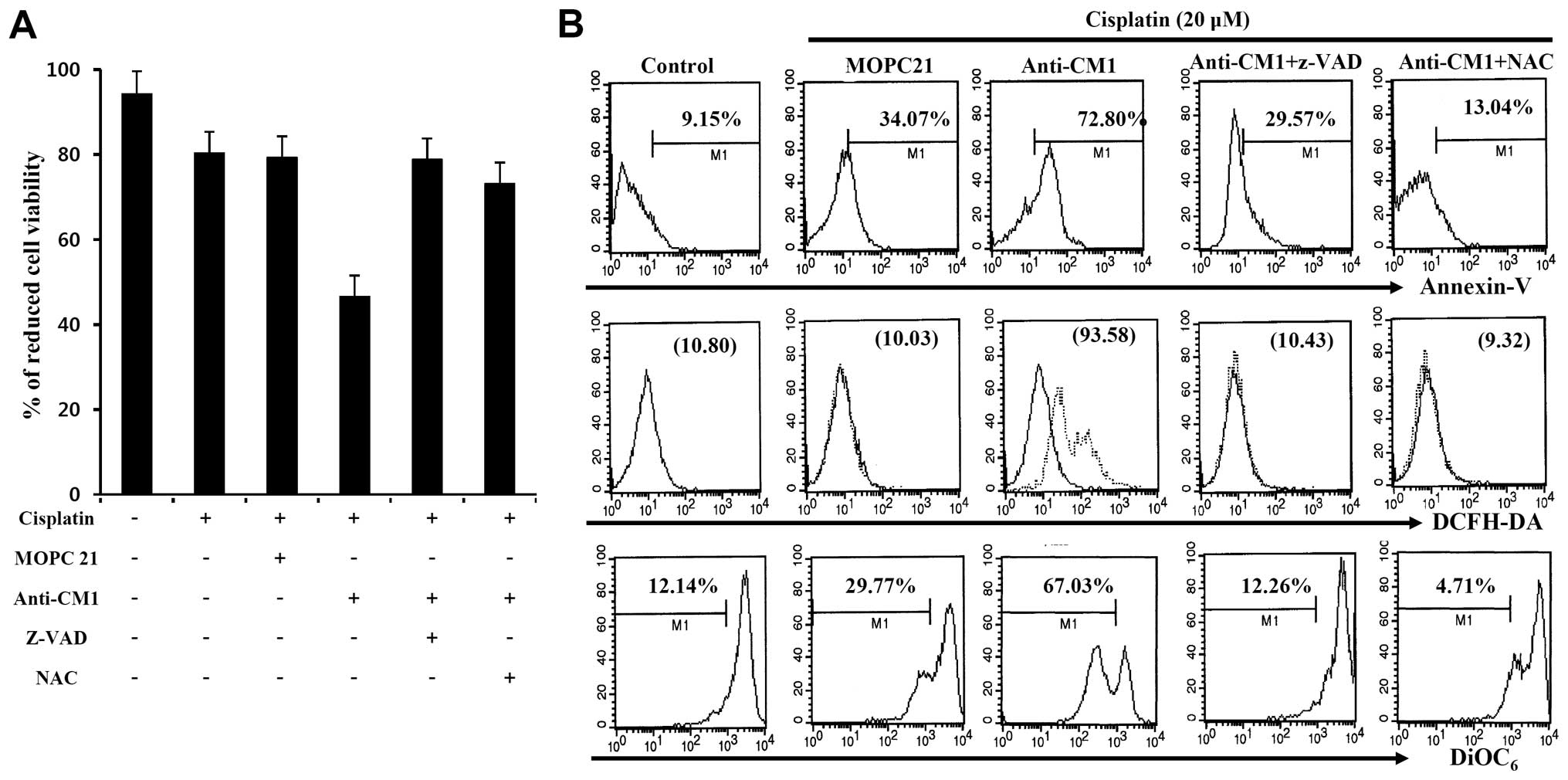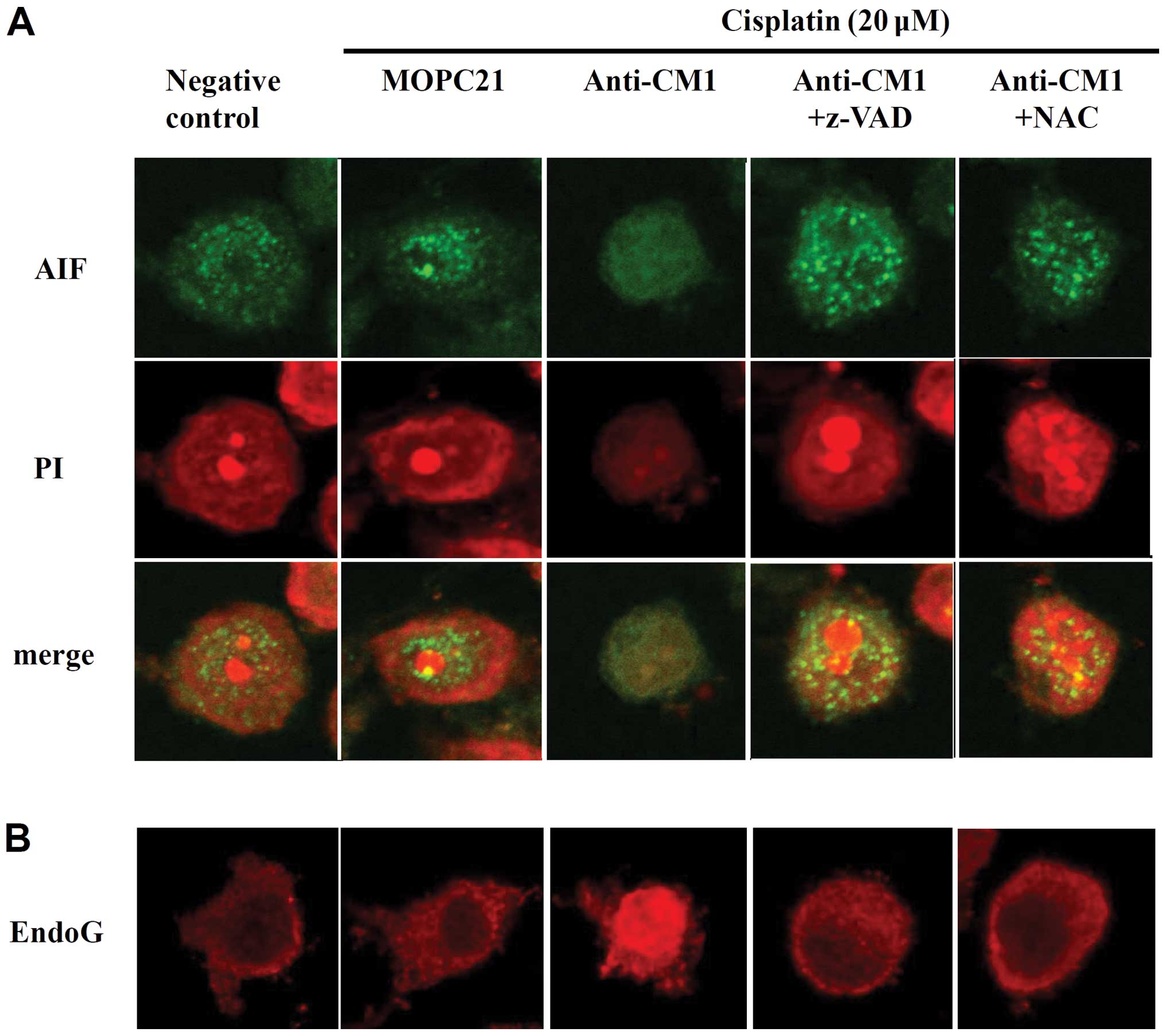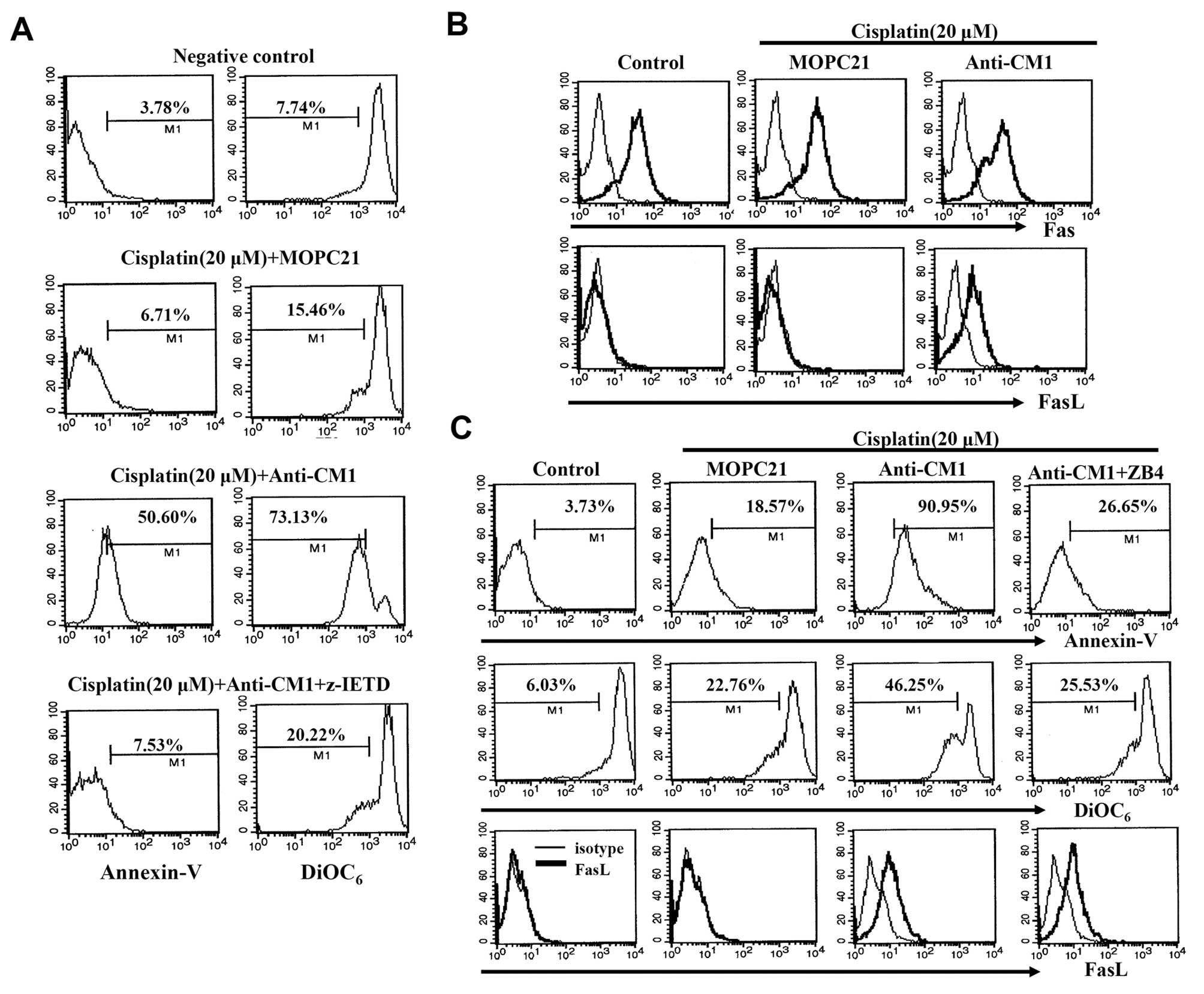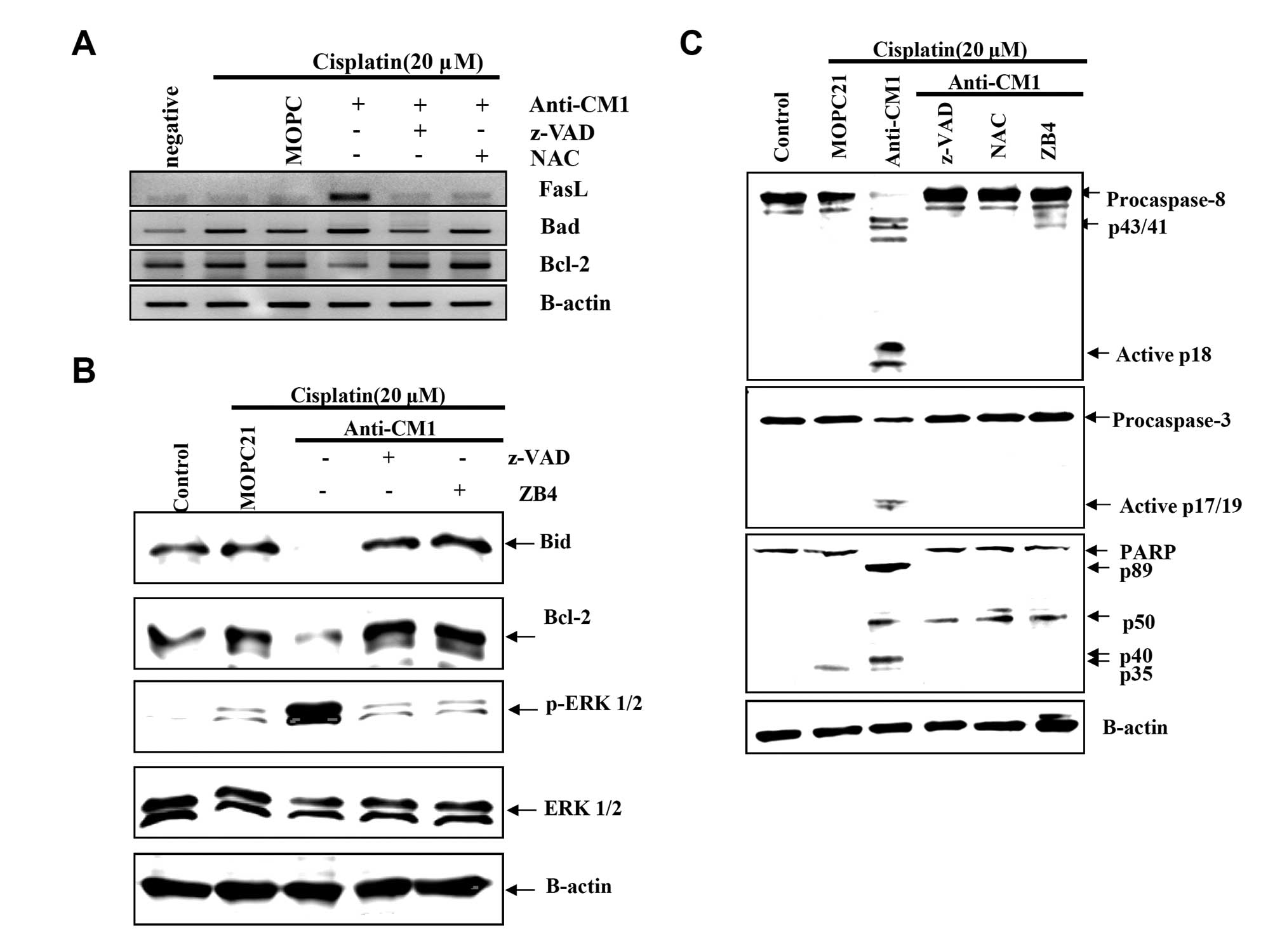|
1.
|
Jemal A, Bray F, Center MM, Ferlay J, Ward
E and Forman D: Global cancer statistics. CA Cancer J Clin.
61:69–90. 2011. View Article : Google Scholar
|
|
2.
|
ZurHausen H: Papillomaviruses and cancer:
from basic studies to clinical application. Nat Rev Cancer.
2:342–350. 2002. View
Article : Google Scholar : PubMed/NCBI
|
|
3.
|
Sankaranarayanan R, Swaminathan R, Brenner
H, Chen K, Chia KS, Chen JG, Law SC, Ahn YO, Xiang YB, Yeole BB,
Shin HR, Shanta V, Woo ZH, Martin N, Sumitsawan Y, Sriplung H,
Barboza AO, Eser S, Nene BM, Suwanrungruang K, Jayalekshmi P,
Dikshit R, Wabinga H, Esteban DB, Laudico A, Bhurgri Y, Bah E and
Al-Hamdan N: Cancer sur vival in Africa, Asia, and Central America:
a population-based study. Lancet Oncol. 11:165–173. 2010.
View Article : Google Scholar
|
|
4.
|
Al-Mansour Z and Verschraegen C: Locally
advanced cervical cancer: what is the standard of care? Curr Opin
Oncol. 22:503–512. 2010. View Article : Google Scholar : PubMed/NCBI
|
|
5.
|
Eastman A: Alkylating and platinum-based
agents. Curr Opin Oncol. 2:1109–1114. 1990. View Article : Google Scholar
|
|
6.
|
Brabec V and Kasparkova J: Molecular
aspects of resistance to antitumor platinum drugs. Drug Resist
Updat. 5:147–161. 2002. View Article : Google Scholar : PubMed/NCBI
|
|
7.
|
Djeu JY and Wei S: Clusterin and
chemoresistance. Adv Cancer Res. 105:77–92. 2009. View Article : Google Scholar : PubMed/NCBI
|
|
8.
|
Siddik ZH: Cisplatin: mode of cytotoxic
action and molecular basis of resistance. Oncogene. 22:7265–7279.
2003. View Article : Google Scholar : PubMed/NCBI
|
|
9.
|
Eastman A: Mechanisms of resistance to
cisplatin. Cancer Treat Res. 57:233–249. 1991. View Article : Google Scholar : PubMed/NCBI
|
|
10.
|
Hur DY, Kim S, Kim YI, Min HY, Kim DJ, Lee
DS, Cho D, Hwang YI, Hwang DH, Park SH, Ahn HK, Chang KY, Kim YB
and Lee WJ: CM1, a possible novel activation molecule on
humanlymphocytes. Immunol Lett. 74:95–102. 2000. View Article : Google Scholar : PubMed/NCBI
|
|
11.
|
Kim D, Hur DY, Kim YS, Lee K, Lee Y, Cho
D, Kang JS, Kim YI, Hahm E, Yang Y, Yoon S, Kim S, Lee WB, Park HY,
Kim YB, Hwang YI, Chang KY and Lee WJ: CM1 ligation initiates
apoptosis in a caspase 8-dependent manner in Ramos cells and in a
mitochondria-controlled manner in Raji cells. Hum Immunol.
63:576–587. 2002. View Article : Google Scholar : PubMed/NCBI
|
|
12.
|
Kim YS, Park GB, Choi YM, Kwon OS, Song
HK, Kang JS, Kim YI, Lee WJ and Hur DY: Ligation of
centrocyte/centroblast marker 1 on Epstein-Barr virus-transformed B
lymphocytes induces cell death in a reactive oxygen
species-dependent manner. Hum Immunol. 67:795–807. 2006. View Article : Google Scholar
|
|
13.
|
Lee HK, Park GB, Kim YS, Song H, Broaddus
VC and Hur DY: Ligation of CM1 enhances apoptosis of lung cancer
cells through different mechanisms in conformity with EGFR
mutation. Int J Oncol. 42:469–477. 2013.PubMed/NCBI
|
|
14.
|
Galluzzi L, Senovilla L, Vitale I, Michels
J, Martins I, Kepp O, Castedo M and Kroemer G: Molecular mechanisms
of cisplatin resistance. Oncogene. 31:1869–1883. 2012. View Article : Google Scholar
|
|
15.
|
Jin KL, Park JY, Noh EJ, Hoe KL, Lee JH,
Kim JH and Nam JH: The effect of combined treatment with cisplatin
and histone deacetylase inhibitors on HeLa cells. J Gynecol Oncol.
21:262–268. 2010. View Article : Google Scholar : PubMed/NCBI
|
|
16.
|
Yunos NM, Beale P, Yu JQ and Huq F:
Synergism from sequenced combinations of curcumin and
epigallocatechin-3-gallate with cisplatin in the killing of human
ovarian cancer cells. Anticancer Res. 31:1131–1140. 2011.PubMed/NCBI
|
|
17.
|
Zhang Y, Wang C, Wang H, Wang K, Du Y and
Zhang J: Combination of Tetrandrine with cisplatin enhances
cytotoxicity through growth suppression and apoptosis in ovarian
cancer in vitro and in vivo. Cancer Lett. 304:21–32. 2011.
View Article : Google Scholar : PubMed/NCBI
|
|
18.
|
Zagouri F, Sergentanis TN, Chrysikos D,
Filipits M and Bartsch R: Molecularly targeted therapies in
cervical cancer. A systematic review. Gynecol Oncol. 126:291–303.
2012. View Article : Google Scholar : PubMed/NCBI
|
|
19.
|
Soonthornthum T, Arias-Pulido H, Joste N,
Lomo L, Muller C, Rutledge T and Verschraegen C: Epidermal growth
factor receptor as a biomarker for cervical cancer. Ann Oncol.
22:2166–2178. 2011. View Article : Google Scholar : PubMed/NCBI
|
|
20.
|
Chen J, Adikari M, Pallai R, Parekh HK and
Simpkins H: Dihydrodiol dehydrogenases regulate the generation of
reactive oxygen species and the development of cisplatin resistance
in human ovarian carcinoma cells. Cancer Chemother Pharmacol.
61:979–987. 2008. View Article : Google Scholar
|
|
21.
|
Miyajima A, Nakashima J, Tachibana M,
Nakamura K, Hayakawa M and Murai M: N-acetylcysteine modifies
cis-dichlorodiammineplatinum-induced effects in bladder cancer
cells. Jpn J Cancer Res. 90:565–570. 1999. View Article : Google Scholar : PubMed/NCBI
|
|
22.
|
Pak JH, Choi WH, Lee HM, Joo WD, Kim JH,
Kim YT, Kim YM and Nam JH: Peroxiredoxin 6 overexpression
attenuates cisplatin-induced apoptosis in human ovarian cancer
cells. Cancer Invest. 29:21–28. 2011. View Article : Google Scholar : PubMed/NCBI
|
|
23.
|
Brozovic A, Fritz G, Christmann M,
Zisowsky J, Jaehde U, Osmak M and Kaina B: Long-term activation of
SAPK/JNK, p38 kinase and fas-L expression by cisplatin is
attenuated in human carcinoma cells that acquired drug resistance.
Int J Cancer. 112:974–985. 2004. View Article : Google Scholar : PubMed/NCBI
|
|
24.
|
Etter AL, Bassi I, Germain S, Delaloye JF,
Tschopp J, Sordat B and Dupuis M: The combination of chemotherapy
and intraperitoneal MegaFas Ligand improves treatment of ovarian
carcinoma. Gynecol Oncol. 107:14–21. 2007. View Article : Google Scholar
|
|
25.
|
Hougardy BM, van der Zee AG, van den
Heuvel FA, Timmer T, de Vries EG and de Jong S: Sensitivity to
Fas-mediated apoptosis in high-risk HPV-positive human cervical
cancer cells: relationship with Fas, caspase-8, and Bid. Gynecol
Oncol. 97:353–364. 2005. View Article : Google Scholar : PubMed/NCBI
|
|
26.
|
Baguley BC: Novel strategies for
overcoming multidrug resistance in cancer. BioDrugs. 16:97–103.
2002. View Article : Google Scholar : PubMed/NCBI
|
|
27.
|
Ikuta K, Takemura K, Kihara M, Naito S,
Lee E, Shimizu E and Yamauchi A: Defects in apoptotic signal
transduction in cisplatin-resistant non-small cell lung cancer
cells. Oncol Rep. 13:1229–1234. 2005.PubMed/NCBI
|
|
28.
|
Wu W, Wang HD, Guo W, Yang K, Zhao YP,
Jiang YG and He P: Up-regulation of Fas reverses cisplatin
resistance of human small cell lung cancer cells. J Exp Clin Cancer
Res. 29:492010. View Article : Google Scholar : PubMed/NCBI
|
|
29.
|
Elmore S: Apoptosis: a review of
programmed cell death. Toxicol Pathol. 35:495–516. 2007. View Article : Google Scholar : PubMed/NCBI
|
|
30.
|
Wang J, Zhou JY and Wu GS: ERK-dependent
MKP-1-mediated cisplatin resistance in human ovarian cancer cells.
Cancer Res. 67:11933–1141. 2007. View Article : Google Scholar : PubMed/NCBI
|
|
31.
|
Wu ZZ, Sun NK, Chien KY and Chao CC:
Silencing of the SNARE protein NAPA sensitizes cancer cells to
cisplatin by inducing ERK1/2 signaling, synoviolin ubiquitination
and p53 accumulation. Biochem Pharmacol. 82:1630–1640. 2011.
View Article : Google Scholar : PubMed/NCBI
|
|
32.
|
Liu WH and Chang LS: Piceatannol induces
Fas and FasL up-regulation in human leukemia U937 cells via
Ca2+/p38alpha MAPK-mediated activation of c-Jun and
ATF-2 pathways. Int J Biochem Cell Biol. 42:1498–1506. 2010.
View Article : Google Scholar : PubMed/NCBI
|
|
33.
|
Duan SG, Cheng L, Li DJ, Zhu J, Xiong Y,
Li XW and Wang SG: The role of MAPK-ERK pathway in 67-kDa laminin
receptor-induced FasL expression in human cholangiocarcinoma cells.
Dig Dis Sci. 55:2844–2852. 2010. View Article : Google Scholar : PubMed/NCBI
|
|
34.
|
Wang M, Zhang L, Han X, Yang J, Qian J,
Hong S, Samaniego F, Romaguera J and Yi Q: Atiprimod inhibits the
growth of mantle cell lymphoma in vitro and in vivo and induces
apoptosis via activating the mitochondrial pathways. Blood.
109:5455–5462. 2007. View Article : Google Scholar : PubMed/NCBI
|
|
35.
|
Filomeni G, Aquilano K, Rotilio G and
Ciriolo MR: Reactive oxygen species-dependent c-Jun NH2-terminal
kinase/c-Jun signaling cascade mediates neuroblastoma cell death
induced by diallyl disulfide. Cancer Res. 63:5940–5949.
2003.PubMed/NCBI
|



